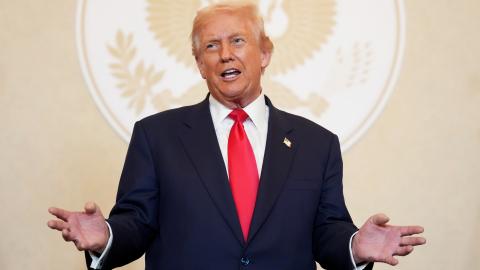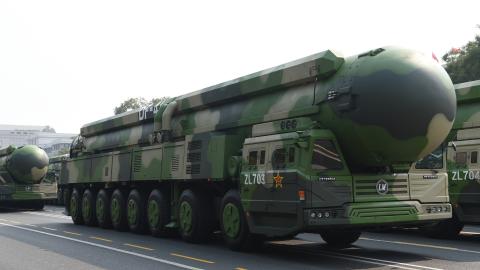Executive Summary
Based on current trends, China will become a quantitative and qualitative nuclear weapons peer of the United States by the early to mid-2030s with a diversified, accurate, and survivable force that will rival America’s. Rather than having only high-yield nuclear missiles as a strategic deterrent against nuclear attack, the People’s Liberation Army (PLA) is developing a range of strategic and tactical nuclear weapons, the latter being lower-yield weapons usable in a conflict theater.
Why is China seemingly going beyond its long-standing nuclear weapons approach of maintaining only a minimal deterrent or assured retaliation? Why has it chosen to rapidly develop its nuclear arsenal and related delivery system in a deliberately opaque manner?
This report argues that Xi Jinping and the Chinese Communist Party (CCP) decided to embark on such a rapid nuclear modernization not primarily because China wants to “win” a nuclear exchange against the US. Rather, Beijing wants to create political and psychological effects that lead to enormously important strategic and military effects.
As the report explains, the CCP and PLA are using the rapid development of nuclear capability and related delivery systems to subdue the adversary and win without fighting. The following are components of achieving this:
- Degrade the adversary’s decision-making.
- Weaken the adversary’s will to fight.
- Undermine the adversary’s public support for war.
- Undermine the resolve of the adversary’s government from within.
- Support and enhance deterrence.
The report assesses that there are three ways in which China uses nuclear modernization to change the material and psychological environment with important strategic effects that work to its advantage.
First, China uses advances in nuclear weapons to craft and entrench its strategic narratives throughout the region. Second, nuclear modernization enhances Beijing’s ability to deter, enjoy escalation dominance, and coerce in material and psychological ways that are advantageous for China. Third, Chinese modernization manipulates and degrades trust in US extended nuclear deterrence and deepens allied fears of US abandonment.
More broadly, the report argues that these strategic effects of Chinese nuclear modernization are completely aligned with evolving CCP and PLA notions of strategic stability, strategic deterrence, and strategic capabilities. For China, strategic stability is not simply a stable state in its relations with other great powers. It entails a stability that is advantageous for the advancement of Chinese geopolitical and development objectives. In this sense, a stable but dynamic (rather than static) set of relationships and arrangements allows China to accumulate comprehensive national power in a relative and absolute sense.
For the CCP and PLA, strategic deterrence is not only about deterring an adversary from a specific military course of action or policy. It also involves placing ongoing and enduring military and nonmilitary constraints on an adversary in a manner that is advantageous for the pursuit of China’s broader objectives. Indeed, China’s nuclear weapons do not exist only to deter a nuclear attack. They also exist to shape the military and nonmilitary actions and mindsets of other states to ensure they are conducive to Chinese interests. This includes asymmetric strategic stability and asymmetric strategic deterrence, which shape the actions and mindsets of nations that do not have proportionate strategic capabilities.
The modernizing nuclear arsenal exists to enable China to attack the adversary’s plans (strategies) and allies, bringing China one step closer to subduing the enemy and winning without fighting.
The report then offers case studies of the Chinese stratagem against the Philippines, Japan, and South Korea. It concludes with the recommendations summarized below:
- Abandon the false hope of arms control and embrace ambiguity and strategic instability.
- Recognize that there is no need for allies to consider developing their own nuclear weapons. This is a distraction that will play into Chinese hands.
- Double down on conventional allied rearmament and underpin it with credible US extended nuclear deterrence.
- Engage in psychological warfare with strategic effects.
















